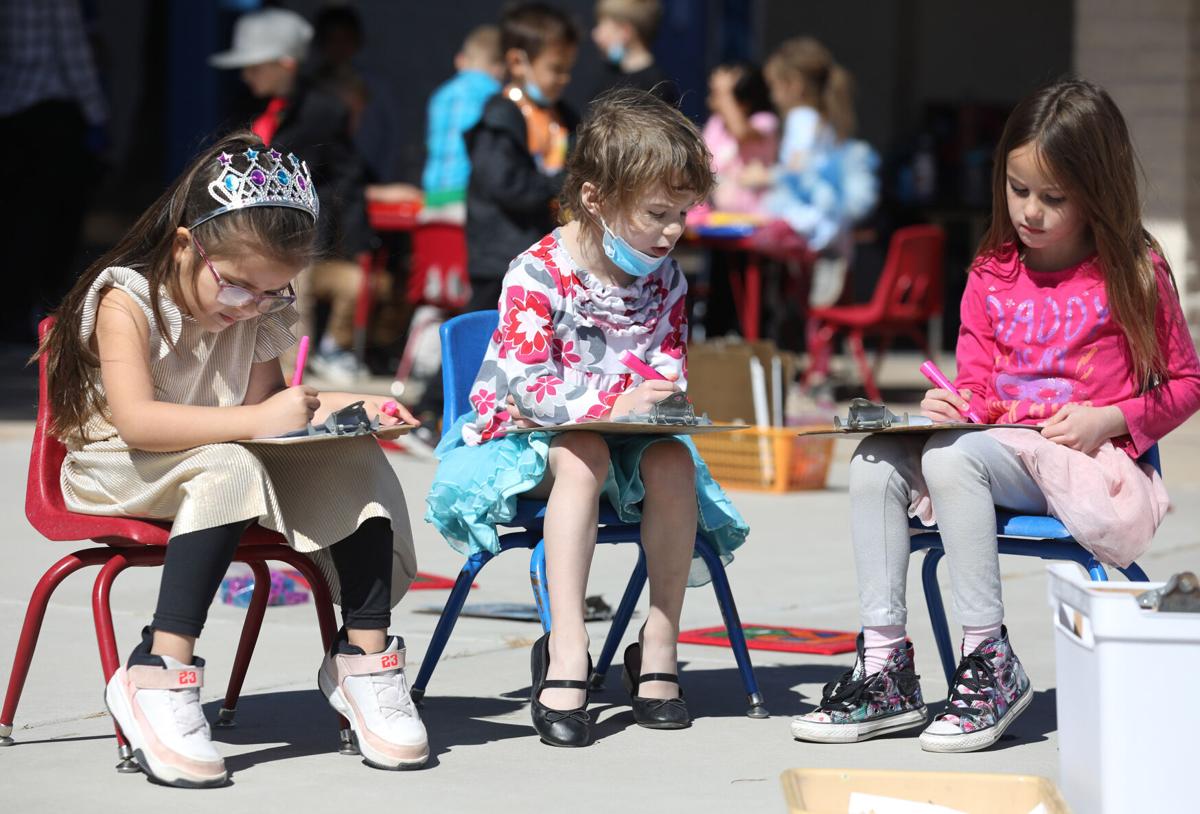More of Pima County’s children and teens will be ditching masks in school following recent changes in county and federal guidelines.
The Centers for Disease Control and Prevention suggested Friday that communities decide on easing masking requirements based on the following criteria: COVID-19 case rates below 200 per 100,000 residents, with fewer than 20 new COVID hospital admissions per 100,000 residents over a seven-day period, and less than 15% of hospital beds being used by COVID patients.
Pima County, according to the CDC, was not meeting that threshold as of last week — but is expected to reach it by the end of this week.
The Board of Supervisors ended the county’s mask mandate as of Monday.
The mandate was originally put in place in late December during the omicron variant surge, requiring residents to wear masks indoors when social distancing wasn’t possible. Masks are still required in county buildings when people have to be within 6 feet of one another.
Masking in Amphitheater Public Schools became optional Tuesday after Superintendent Todd Jaeger sent a letter about the change to students and staff.
“Our district will continue to encourage those who choose to wear a mask to do so, and we will enforce our prohibition of disrespectful behavior toward anyone based upon their choice of whether or not to wear a mask,” Jaeger wrote.
The district will still apply certain masking and quarantine mandates for those who test positive for COVID-19, or for those who come in direct contact with an infected person.
Other county school districts are still deciding what to do.
Tucson Unified School District, as of Monday, was not changing its masking requirements. But governing board president Adelita Grijalva didn’t rule out the possibility of discussing that at the board’s March 8 meeting, if the transmission rate in the community continues to decrease.
“As of this point, we haven’t discussed it and it’s not on the agenda,” Grijalva said on Monday. “I’m not opposed to talking about it. We just have to make sure that we are in low to moderate transmission.”
There are important factors to consider despite the CDC’s new recommendations, she said, such as the efficacy of the vaccine for kids ages 5 to 11.
Other factors to consider include how to continue to protect vulnerable members of a community or school, and deciding if waiting for higher vaccination rates might be wise, said Dr. Joe Gerald, a researcher with the University of Arizona’s Zuckerman College of Public Health.
The people who remain most vulnerable are those who are immunocompromised, a community’s oldest citizens, and people living with various disabilities.
“It’s possible now for different communities to make different decisions (about masking) and for both communities to be right,” Gerald said Tuesday.
“My guess is most will pull off their mask mandates when they are able to do so. I think some are much more willing to abandon masks than they were just a few weeks ago.”
Sunnyside Unified and Catalina Foothills districts both are continuing to monitor COVID-19 data, and have not yet made any decisions on lifting their mask mandates.
Sunnyside’s governing board plans to discuss the topic at its March 8 meeting, said spokeswoman Marisela Feliz.
The Flowing Wells School District still has a mask mandate, according to its website. School officials did not respond to Arizona Daily Star questions.
The Vail, Marana and Sahuarita districts have not had mask mandates in recent months, while Tanque Verde School District ended its masking requirement for students in pre-kindergarten through sixth grade in mid-December.
Keeping masking in place means transmission rates would fall faster but at this point, Gerald said, many of the people who were going to get infected with the omicron variant have done so already.
For the week ending Feb. 20, roughly 12,378 Arizona residents were diagnosed with COVID-19, a 43% decrease from the 21,842 cases reported the week ending Feb. 13.





